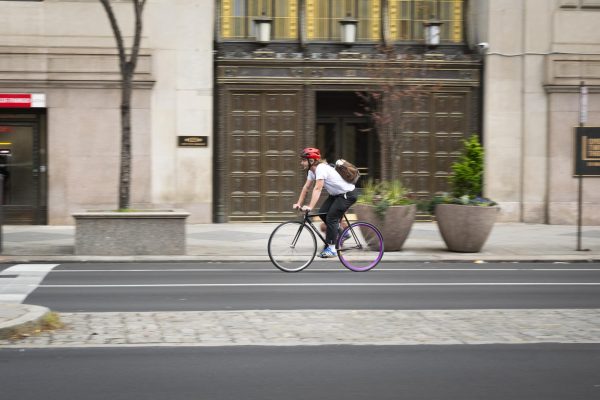
Wyatt Campuzano '27
Have you ever wanted to leave your house and then realized someone else in your family had taken the car? Bummer! You can’t see your friends, get groceries, go to a park, or even eat at a restaurant now. The situation above might seem extreme, but it is unfortunately the truth in an overwhelming majority of places in the US.
Unless you live downtown in a major city like New York, chances are that your family has a car or even multiple. American cities have been designed around cars. The roads are extremely wide and not pedestrian-friendly, and there is no transition between downtown and suburbs.
This was especially apparent during my visit to Houston for the 2023 FIRST Championship, where we went from the bustling city to grid-like suburbs in about a block. In the US, there is no transition between urban areas and suburban areas.
To make matters worse, most US cities do not have mixed-use zoning like most European cities. In other words, all residential spaces are in one place, and all stores are in another place. However, when I lived in the suburbs of Brussels and Paris, there was a swimming pool, a Carrefour, a small park, and a subway station within 3 minutes of walking. This is also true for many parts of Europe.
The effect of this is that you need to travel a very long distance to get groceries, eat something, or go to the gym. A car is the only option in most cases to get there.
Another stark feature of US cities is the width of roads. In the US, lanes are about 40% wider than European roads. This gives the impression that cars are prioritized over all other modes of transportation.

You may ask, why is car dependency bad? A negative effect of car dependency is the reduced opportunity to meet new people. When more people walk or take public transportation, you get more opportunities to meet more people because people are not isolated in metal boxes. This is especially important after the pandemic where people are even more separated. Needing a car to go everywhere gives children under 16 less independence than children in other countries.
Another drawback of car dependency is the increased traffic. It is way more efficient and less traffic-inducing for a subway to move 200 people than two hundred people in 100 cars. No matter how many lanes we add, they will never solve the root of the issue: the lack of alternative ways to get to your destination efficiently. The more lanes you add, the more cars will come and fill those lanes up.
No matter what new technology is invented, the problem cannot be solved unless we drastically change how we design our cities. We need to get more stores and gathering spaces integrated into the community and also change the culture around cars. When cars are not the only reliable method of transportation, the country will be a safer and more efficient place for everyone.